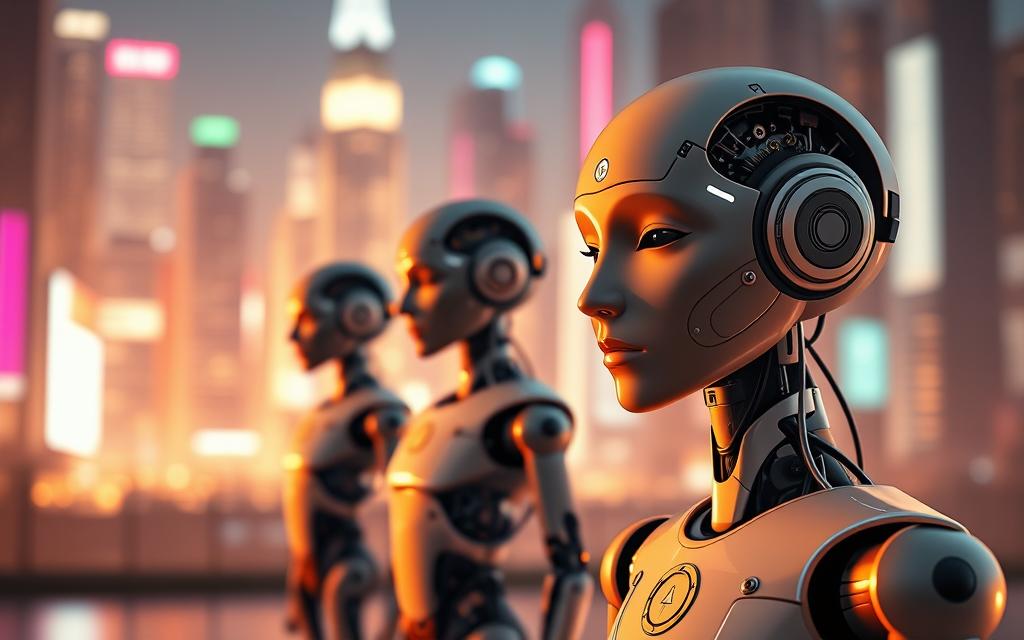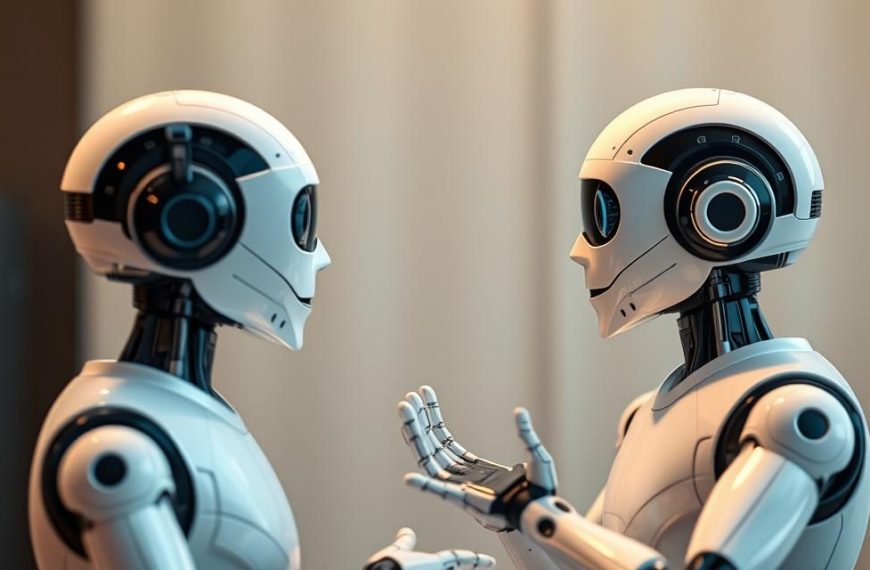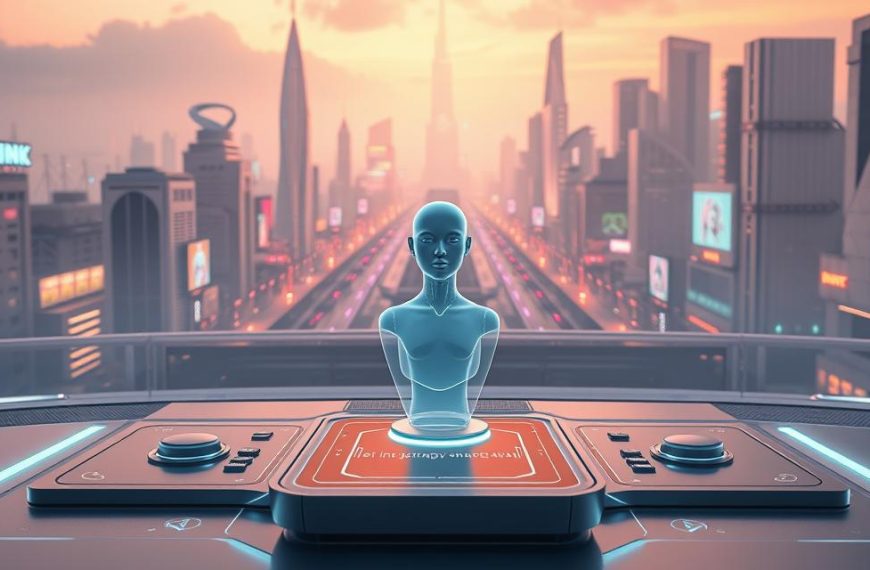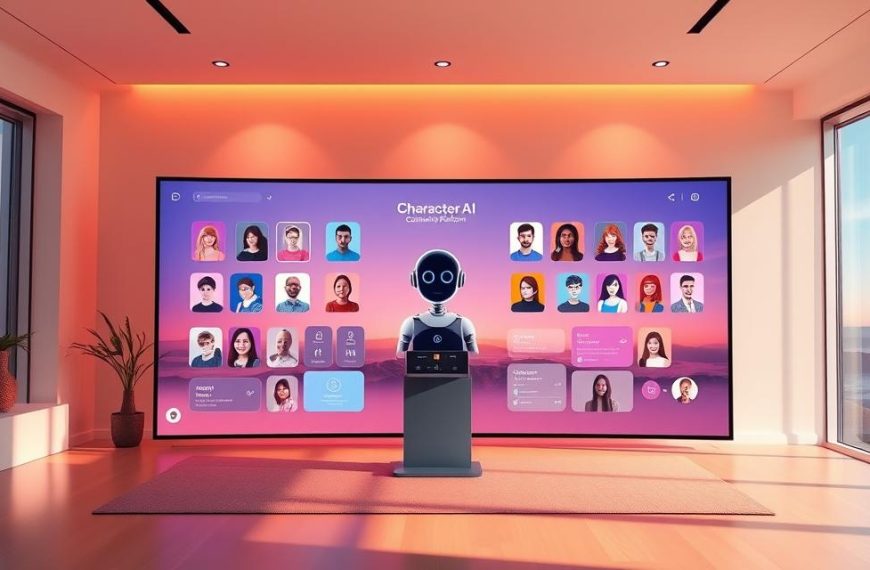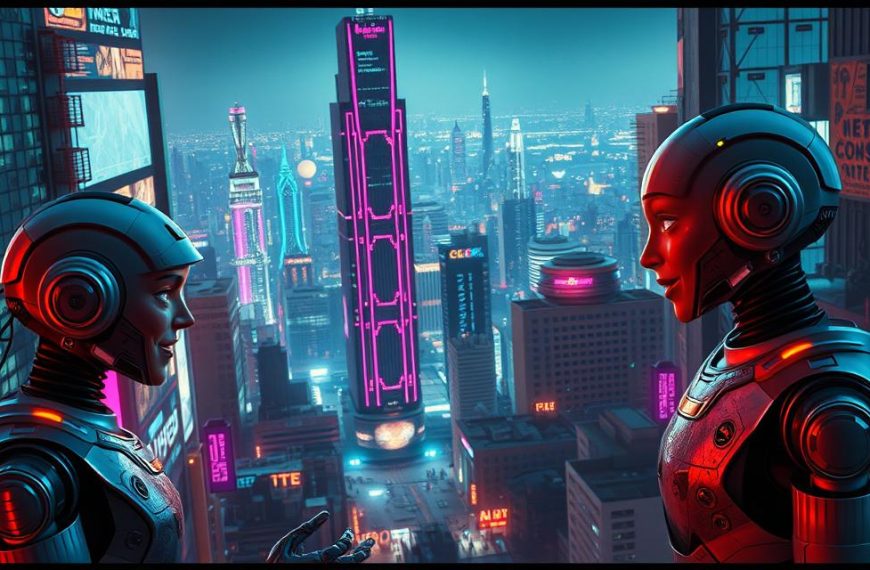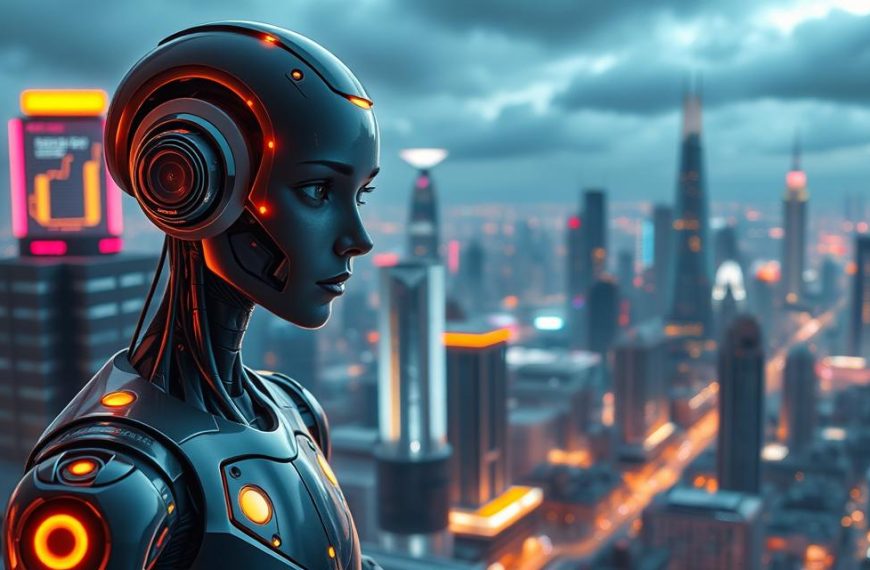The evolution of Character.AI has been remarkable, transforming it into one of the most popular platforms for creating and interacting with artificial intelligence characters.
Initially, the platform started with a much simpler version, laying the groundwork for its current capabilities.
Understanding the historical context and evolution of Character AI is crucial to appreciating its current features and the growing popularity of AI characters.
Many users still feel nostalgic about the earlier version of the platform, despite the technological advancements.
The Evolution of AI Character Interaction
The evolution of AI character interaction is a story of continuous improvement, from simple command-response models to nuanced conversations. Early chatbots and virtual assistants laid the groundwork for more sophisticated AI character platforms. Over time, user expectations for AI interactions have driven development of more natural conversation capabilities, enhancing the overall user experience. Technological breakthroughs in intelligence have enabled this progression, allowing for multimodal interactions incorporating images, voice, and other elements.
What Was Old Character AI?
The earliest version of Character AI introduced users to a basic yet innovative AI interface. This platform allowed users to create unique AI “characters” and engage in conversations as if they were interacting with real personalities.
The old Character AI platform was primarily web-based and focused on a core concept: enabling users to interact with AI-powered characters. It was positioned as a natural language chatbot model that utilised artificial intelligence to generate human-like responses.
| Feature | Description |
|---|---|
| Core Functionality | Creating and interacting with AI-powered characters |
| Initial Launch | Primarily web-based, focused on character creation and chat |
| Primary Use Cases | Addressing the need for interactive AI character experiences |
Character AI, also referred to as “c.ai,” differentiated itself from other AI conversation platforms by allowing users to create unique characters. The creators aimed to provide a platform where users could engage with AI in a more personal and interactive way.
Core Features That Defined the Original Platform
The original Character AI platform was defined by its simplicity and text-based interactions. It didn’t have fancy graphics or advanced memory systems, but it allowed users to engage in creative storytelling.
The platform’s core features included a text box to define a character’s traits, a sample greeting and conversation starter, and a very basic chat interface. These features enabled users to create unique characters and interact with them in a text-based environment.
Text-Based Character Creation
The text-based character creation system allowed users to define personalities through written descriptions. This approach encouraged creativity and imagination, as users had to describe their characters’ traits and backstories in detail.
Basic Chat Interface
The basic chat interface was simple, with users interacting with characters through text inputs. Although it had limitations compared to modern versions, it provided a foundation for chat interactions that were engaging and immersive.
| Feature | Description | Impact |
|---|---|---|
| Text-Based Creation | Allowed users to define characters through written descriptions | Encouraged creativity and imagination |
| Basic Chat Interface | Enabled text-based interactions between users and characters | Provided a simple, immersive experience |
| Character Customisation | Allowed users to personalise characters through text inputs | Enhanced user engagement and creativity |
For more information on the evolution of Character AI, visit https://charactarai.com/old-character-ai/.
The User Experience: Then vs Now
The evolution of Character AI has significantly impacted the user experience, transforming the way users interact with the platform. This transformation is evident in both the interface and the interaction models.
Interface Changes
The original user interface of Character AI has undergone significant changes, evolving into a more user-friendly and intuitive design. The new version offers a more streamlined and accessible interface, making it easier for users to navigate and utilise the platform’s features. For instance, the current interface includes interactive options such as features, communities, filters, and categories, which enhance user comfort and ease of use.
Interaction Improvements
The interaction model has also seen considerable improvements, becoming more intuitive and responsive. The conversation flow and character responses have been enhanced, providing a more natural and engaging experience. According to a comparative analysis on The Data Scientist, the new version has made significant strides in creating a more immersive interaction.
| Feature | Old Version | New Version |
|---|---|---|
| Interface Design | Basic, less intuitive | User-friendly, streamlined |
| Interaction Model | Less responsive | More intuitive and responsive |
| Conversation Flow | Less natural | More natural and engaging |
As Character AI continues to evolve, user feedback has played a crucial role in shaping the interface and interaction improvements. The platform’s visual design has also been enhanced to boost user engagement, with character creation and management processes being streamlined for a more seamless experience.
“The new Character AI interface is a significant improvement over the old version, offering a more engaging and user-friendly experience.”
Why Users Feel Nostalgic About Old Character AI
The nostalgia for old Character AI is a sentiment many users can’t shake off. This nostalgia stems from several key aspects of the platform’s early days.
Raw Creative Freedom
Users enjoyed raw creative freedom, relying on their imagination and writing skills to craft compelling characters. The old version allowed for more experimental character creation, fostering creativity among its users.
Tight-Knit Community
The tight-knit community was another factor, with fewer users creating a more connected atmosphere. Creators supported each other’s characters, enhancing the overall user experience.
| Features | Old Character AI | Current Character AI |
|---|---|---|
| Creative Freedom | High | Moderate |
| Community | Tight-Knit | Diverse |
| Restrictions | Fewer | More |
The old Character AI version offered a unique way for people to engage with AI, creating memorable experiences. The combination of raw creative freedom and a tight-knit community made it special.
Technical Limitations That Prompted Evolution
As Character.AI’s user base expanded rapidly, the platform faced significant technical challenges that necessitated substantial evolution. The original version, while engaging, had limitations that became more pronounced as the user count grew.
Scalability Challenges
The early version of Character AI wasn’t designed to handle the increased server load that came with a growing user base, leading to scalability issues. As more users interacted with the platform, the strain on the servers became apparent, highlighting the need for infrastructure improvements.
Context Retention Issues
The original platform struggled with context retention, often resulting in bots forgetting crucial information mid-conversation. This limitation frustrated users and underscored the necessity for advancements in memory and context management.
How Old Character AI Transformed Over Time
Over time, Character AI has undergone significant transformations, shaping it into the platform we know today. Each update or “new version” aimed to fix existing issues, add new tools, and enhance the user experience—without losing the charm that made the original platform special.
The evolution of Character AI can be seen in several key areas:
- Advanced character memory: Bots became better at remembering context across messages.
- User profiles and persona settings: Letting AI know more about you.
- Development of mobile apps for iOS & Android: Taking Character.AI anywhere became possible.
Memory and Context Improvements
One of the significant improvements was in memory and context handling. The AI model’s ability to retain context across conversations was enhanced, leading to more coherent and contextually appropriate responses. This improvement was crucial in making interactions more meaningful and engaging.
| Feature | Original Version | Current Version |
|---|---|---|
| Character Memory | Limited context retention | Advanced context retention across messages |
| Mobile Accessibility | No mobile app | Mobile apps for iOS & Android |
| User Profiles | Basic profiles | Detailed user profiles and persona settings |
Mobile Application Development
The development of mobile apps for Character AI marked a significant milestone in its evolution. With the release of apps for both iOS and Android, users could access Character AI on-the-go, expanding its reach and usability. This update reflected the platform’s adaptability to changing user needs and technological advancements.
As Character AI continues to evolve with new updates and versions, it balances maintaining its core appeal while implementing necessary improvements. The journey of Character AI is a testament to the importance of continuous innovation and user-centric development in the tech industry.
Safety and Moderation: The Necessary Changes
As Character AI evolved, the importance of safety and moderation became increasingly paramount. The platform faced challenges in filtering out harmful content, raising potential risks for users. To address these concerns, the platform implemented advanced filters to detect and prevent inappropriate language and topics, ensuring a safer community.
The evolution of content filtering systems was crucial in balancing creative freedom with responsible AI usage. According to Character AI’s community safety updates, user feedback played a significant role in shaping safety features. The platform’s approach to moderation has been compared to other AI conversation platforms, highlighting its commitment to providing a secure environment for its users within the community on the platform.
Accessing the Old Character AI Version
The old Character AI version, although retired, can still be accessed through a simple workaround. As of September 24, 2024, the platform is no longer directly accessible. However, users can modify the URL to access the previous interface. To do this, open your web browser and navigate to the Character AI website.
Look at the URL in the address bar, and you’ll notice a section that says “/chat2?”. Modify the URL by removing the “2” from this section, so it reads “/chat?”. Press Enter to reload the page, and you’ll be able to access the old version of Character AI.
It’s essential to note that using older versions may result in some features being missing or broken. The company’s stance on supporting legacy versions is not explicitly stated, but community-discovered workarounds like this provide users with flexibility.
Alternative Platforms for AI Character Enthusiasts
Users seeking more freedom in AI character interactions can explore alternative platforms.
Several options are available, catering to different user preferences and offering unique features.
Crushon.AI
Crushon.AI allows users to engage in unfiltered conversations and create their own characters.
Janitor AI
Janitor AI is similar to Character AI but offers the option to disable the NSFW filter, providing more flexibility in interactions.
Tavern AI
Tavern AI focuses on text-based AI characters with less emphasis on content filtering, suiting users who prefer diverse personalities.
These platforms offer varying degrees of freedom and cater to different user preferences, providing options for AI character enthusiasts.
The Legacy of Old Character AI on Modern AI Conversation
The legacy of old Character AI continues to shape the modern AI conversation landscape in profound ways. Its influence can be seen in the advancements made in natural language processing (NLP), enabling more sophisticated and context-aware conversations.
The original Character AI platform has had a lasting impact on the broader field of AI conversation platforms. Some key factors that contributed to this include:
- The development of more advanced NLP capabilities, allowing for tailored responses and enhanced user interactions.
- The establishment of new paradigms for AI personality development through its character creation approach.
- The shaping of user expectations through early experiences with Character AI, influencing the direction of subsequent innovations.
The table below highlights some of the key innovations and their impact on modern AI conversation platforms:
| Innovation | Impact |
|---|---|
| Advanced NLP Capabilities | Enabled more natural and engaging user interactions |
| Character Creation Approach | Established new paradigms for AI personality development |
| Community-Focused Approach | Influenced the development of community-centric features in modern platforms |
In conclusion, old Character AI’s legacy is evident in the modern AI conversation landscape, with its influence extending to various aspects of contemporary AI platforms.
Conclusion: What We’ve Learned from Character AI’s Journey
The journey of Character AI has been a transformative one, reshaping how we interact with artificial intelligence. As the platform evolved, it balanced technological advancements with its core appeal, enhancing features that matter most to users. The new version of Character AI wasn’t just an update; it was a response to user feedback and rapid AI tech advancements. For more insights on the pros and cons of Character AI, visit our detailed analysis at DigitalDefynd. The legacy of the old Character AI continues to shape the future of AI conversation platform for people.
